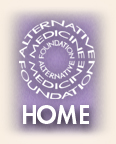|
||||||||||||||||||||||||||||||||||||||||||||||||||||||||||||||||||||||||||||||||||||||||||||||||||||||||||||||||||||||||||||||||||||||
| Element | Quality | Function |
| Earth | Solidity | Formation and stability |
| Water | Fluidity | Conglomeration and integration |
| Fire | Warmth | Maturation and transformation |
| Wind | Motility | Growth and transportation |
| Space | Spaciousness | Room for growth and movement |
Another important concept in Tibetan medicine is the dichotomy between warm and cold. Diseases as well as remedies and food are distinguished as warm and cold or as warming and cooling respectively. mKhrispa is warm and badkan is cool. rLung is a special case and is basically neutral, it can aggravate "warm" and "cold", much like wind is able to boost a fire as well as cool down the body. All three energies work together and rLung imbalance is at the root of most diseases.
These principles provide the central concept of the general theory, etiology, pathology, diagnosis and treatment of the mind/body interaction in Tibetan medicine.
Humors, Elements, and Soma
| Humors | Associated elements | Links to the three mental poisons | Nature of humors | Humors' sub-categories | Psycho-physiological links | ||
| Tibetan | English | Hot/cold | Qualities | ||||
| rLung | Wind | Wind/air | Attachment + desire | Neutral | Rough, light, cold, subtle, hard, mobile | Life sustaining | Brain, senses, intellect |
| Ascending | Chest, speech, memory | ||||||
| Pervasive | Heart, movement | ||||||
| Fire accompanying | Stomach, digestion | ||||||
| Downward cleansing | Pelvis, excretions | ||||||
| mKhrispa | Bile | Fire | Hatred | Hot | Oily, sharp, hot, light, fetid, purgative, moist | Digestive | Stomach, gastro-intestinal function |
| Color regulating | Heart, mental, discretion, anger and ambition | ||||||
| Determining or accomplishing | Liver, blood | ||||||
| Sight giving | Eyes | ||||||
| Complexing clearing | Skin | ||||||
| Badkan | Phlegm | Earth & water | Delusion/narrow mindedness | Cold | Oily, cool, heavy, blunt, smooth, firm and sticky | Supportive | Thorax region |
| Decomposing | Epigastric region or undigested site | ||||||
| Experiencing | Tongue | ||||||
| Satisfying | Head, level of sensitivity of the five senses | ||||||
| Connective | Joints | ||||||
| No correspondence | space | ||||||
Diagnosis
Three diagnostic approaches are described in the rGyud-Bzhi: looking, feeling, and listening. Listening means first of all listening to each patient's case history, at the circumstances in which he or she lives, and their accustomed diet. Looking mainly consists of a first visual impression of the patient (posture and movements), as well as the examination of the tongue and urine. Color, smell, and bubbles of the urine are examined. Feeling leads to the most distinctive diagnostic technique: pulse reading. The doctor reads the pulse with three fingers on the radial artery on both wrists. With each finger two pulses are felt, one on the left, and one on the right side of the fingertip. In this way a total of 12 points are examined. Consecutively the pressure at each of the 12 spots is raised for a couple of seconds, and the pulse is observed. Notions like sunken, protruding, faint, strong, bulky, thin are used to describe the state of a pulse. Every pulse corresponds to an organ. All diagnostic methods together deliver an overall picture of the patient and the imbalance of rLung, mKhrispa and badkan.
Treatment
Disharmonies in the humors and disturbances of the mind, causing diseases, are traditionally treated in a holistic manner, by specific diets and behavioural modifications, medicinal plants and remedies, external therapies, rejuvenation, Buddhist spiritual healing (reading mantras, meditation practices), Tibetan Yoga etc. These methods are all designed to bring back harmony, equilibrium, and to restore the imbalance of the three humor system and the mind. Which therapy is applied when and where, varies from doctor to doctor and from region to region. Generally, treatment with herbal medications is the most common and mportant. Beside that, patients should follow the advice of the doctor on diet and behavior.
Diet
In recommending an appropriate diet, Tibetan physicians consider which types of food are harmful and which might be beneficial, the amount of food to be eaten, the number of meals per day and the proper meal times. Food is analyzed based on its qualities and nature as defined by a five element theory. Like Hippocrates, founder of Western medicine, the Tibetan doctors also propound the saying: "Let food be thy medicine".
Behavioral modification
Behavioral modification can include meditation instruction, spiritual advice, counselling, exercise, or the reorganization of habitual patterns such as sleep habits and eating schedules. The type of behavioral modification depends on the type of humoral imbalance.
Herbal Medicines
If change of diet and behavior are not sufficient to relieve the condition, herbal medicines are prescribed. The Tibetan materia medica consists of a huge number of medicinal herbs, minerals and to a lesser extent animal substances. The rGyud-Bzhi says: "there is nothing on earth that could not be used as medicine". Medicinal substances are grouped by their properties, relying on taste (sweet, sour, salty, bitter, hot and astringent) and potency (heavy/light, oily/rough, hot/cold and blunt/sharp). The taste of a substance is directly linked to one of the eight potencies and to the humors. A Tibetan herbal medication always consists of several ingredients, sometimes 20 or more. In most cases it consists of one major group of ingredients and two minor ones. Of the two minor ones, one supports the effect of the major group and the other one helps suppress unwanted side effects. The processing of the medicine follows a traditional method of drying the plants, grinding, mixing and eventually pressing if the medicine is to be used as pills. Other frequent forms of dispension are powders or decoctions.
Physical Therapies
If necessary, physicians, in addition to dietary and behavioral advice and herbal medicines, employ external therapies such as acupuncture, moxibustion, cupping, massage, baths and inhalation therapy.
Indications for Tibetan Medicine today
While in the traditional setting Tibetan medicine is used in any kind of diseases, in the Western context it turns out to be especially effective in the treatment or amelioration of chronic conditions, which conventional western medicine either cannot help, or for which it can offer only minimal relief. In such cases Tibetan medicine may ameliorate the disease and if it can't cure it often offers an improvement in the quality of life and/or a reduction of side effects of an orthodox Western therapy.
In cases of serious organ diseases it is insufficient to rely only on pulse and urine diagnosis. Patients are advised to consult their general practitioner or get a medical checkup. Western diagnostics and therapy are still indispensable, especially in serious illnesses. There are almost no scientific clinical data on the effectiveness of Tibetan formulas or other treatment with Tibetan Medicine. Since the level of evidence for the effectiveness of Tibetan medicine is insufficient, precaution and careful observation of the patient is important.
If there is an indication for use of western medication, Tibetan medicine can be used additionally. It is also important to be aware that Tibetan doctors do not use the same medical terminology as western physicians.
![]()
Tibetan medicine in Asia
In the context of the People's Republic of China (PRC), the cultural and medical system of Tibet has been aligned more with "science" than with "religion" by the Chinese state, which has helped state support for Tibetan medicine. Yet this support has had both positive and negative impacts on Tibetan medical practitioners, clinical practice, education and the production of Tibetan medicines themselves.
Tibetan Medicine is today practiced in Asia not only in the Tibetan Autonomous Region, which politically belongs to China, but also in China itself. Towards the north it spreads as far as Mongolia and parts of Russia around the lake of Baikal. Southern regions where Tibetan Medicine is also practiced encompass Nepal, Buthan, and the northern parts of India such as Ladakh, Sikkim, and Himachal Pradesh, namely Dharamsala. In the different national states Tibetan Medicine is sometimes termed differently, e.g. Buthanese Medicine or Mongolian Medicine. The Chinese often label Tibetan Medicine as the Tibetan branch of Chinese Medicine, despite many differences in principles and practice between the two medical systems.
Contemporary Tibetan doctors are also dealing with the relationship between Tibetan medicine and biomedicine. Key to these interactions are questions about how to provide the best possible health care for Tibetan communities and other patients, as well as training and clinical opportunities for young Tibetan doctors, while not losing what is unique about Tibetan medicine in an attempt to integrate these two systems of medical knowledge. This includes topics such as the relationship between each system's pharmacopeia, treatment regimens and clinical practice, as well as larger issues such as how "health" or "illness" is defined and on what basis diagnosis is made.
Over recent decades, in addition to the making of medicines by amchis, Tibetan doctors, larger scale production of medicines in factories/natural product companies has developed. Among these are the pharmacy of the Men-Tsee-Khang in Dharamsala and other schools and clinics in Tibet, India and Nepal. Additionally, there seem to have sprung up huge pharmaceutical factories for Tibetan formulas in China in recent years. As Tibetan medicines become commercialized, natural product companies face government and international pressures to standardize production. Issues such as safety and quality guidelines, according to Western standards, are beginning to take hold in Asian productions. Legal questions, e.g., whether Tibetan formulas can be patented or not, now have to be addressed. This pressure to standardize and commercialize Tibetan pharmaceuticals also relates to the future of Tibet's specific ecology and the stresses placed on it by the trade in medicinal plants, in particular. Some efforts at conserving and cultivating a variety of medicinal plants have begun within Tibetan areas of the PRC. However, such endeavours are still at an early stage.
Western Science and Tibetan Medicine
Tibetan Medicine theory has been described from a traditional point of view. The aim in this section is to present an additional approach: How the various aspects of the Tibetan medical system can be understood from a Western point of view. At the systematic level there are two important differences between Tibetan and Western medicines/drugs/pharmaceuticals. Firstly Tibetan formulas are mixtures of many different mainly plant-based components usually including 3 to 20 and sometimes up to 70 components in one preparation. In the analysis of this pharmacological approach it becomes clear that each herb, each root, fruit etc. is in turn itself made up of thousands of substances, each of which could in theory be chemically defined. The fact that the effect of Tibetan formulas is not based on single isolated active substance, but rather on a multiple substance admixture, makes the understanding for western trained doctors and scientists difficult and is a major obstacle to recognition in the modern scientific world. At a minimal level it presents difficulties for the classical Western pharmacological description which is based on the concept of mono-substances and single active ingredients. Secondly, Tibetan thought is triadic. The understanding of physiology is governed by the dynamic interaction of 3 humors (rLung, mKhrispa and badkan). Health is a dynamic equilibrium and is therefore relative because all three humors must be in a corresponding balance for each individual. The aim of Tibetan therapy is thus to restore this equilibrium in the patient. This is in contradiction to the Western concept, according to which health is defined in terms of normal values obtained by statistical procedures from a large patient population. These contradictory concepts make it necessary to adopt a suitable research methodology to investigate the effectiveness of Tibetan medicine and Tibetan formulas in a scientific way. But how can scientific evidence for a traditional medical system such as Tibetan medicine be collected?
For example, a rapid search in the National Library of Medicine's Pubmed database under the relatively broad search-term "Tibetan medicine" yielded only 88 entries out of the total of about 17 million specialist articles contained in the database (May 2008). In comparison, a similar search with the with the search term "Traditional Chinese Medicine" yielded 7054 entries. Additionally, many of the Tibetan Medicine publications have a historical or ethnological content. From the ones on Tibetan herbal formulas the majority deal with pharmacognostic aspects, meaning chemical composition of medical plants, or the effects of single plants from the Tibetan material medica. Thus in order to raise the evidence level for the effectiveness of Tibetan formulas and Tibetan Medicine in its entirety, it is imperative to conduct high standard scientific research with intelligent study designs that use whole formulas and/or diagnosis and treatment protocols. Further it is necessary to publish these data in approved journals in English language. Clearly more scientific studies are needed whereby all types of available evidence and the whole methodological spectrum, from case studies, in vivo studies to clinical trials, randomized controlled trials and meta-analyses, have to be considered.
A further refined search produced the following results:
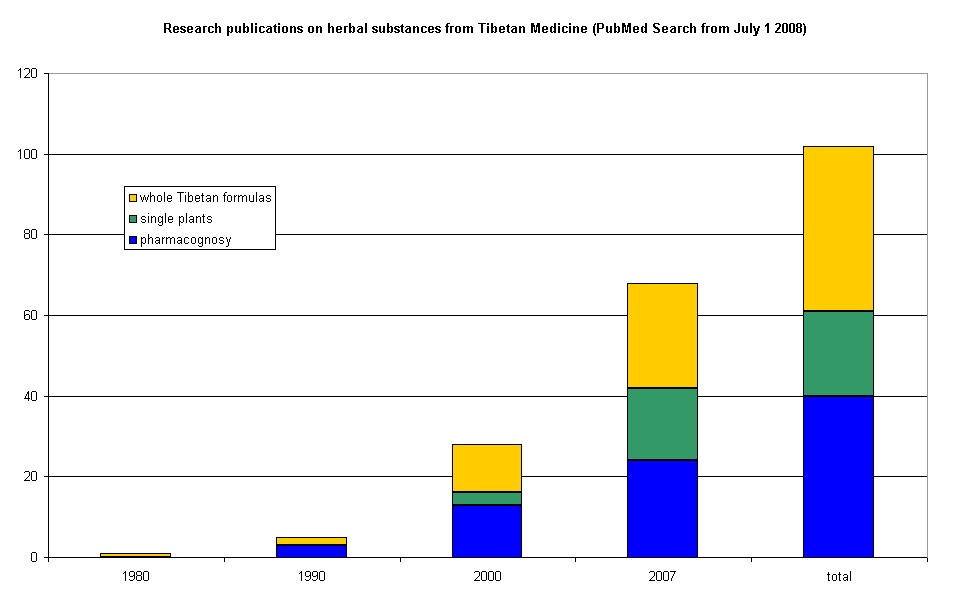
Search terms were: (tibet [Text Word] OR lamaistic [Text Word] OR tibetan [Text Word]) AND (medicine [Text Word] OR herbal [Text Word] OR remedy [Text Word] OR plant [Text Word]) OR padma 28 OR padma lax
Traditional knowledge is often empirically based: histories and local know-how of individuals and amchi dynasties are gathered over centuries, and its rationale is set in a distinct cultural, historical and philosophical setting. For a wider application of this medical and pharmaceutical knowledge in a global context it therefore has to be translated into modern terminology and made available to scientific testing and understanding. This process of trans-cultural translation involves many aspects: the traditional doctor-patient relationship, the difference between the traditional environment and the post-industrial consumer society as well as traditional manufacturing methods in contrast to modern Good Manufacturing Practice (GMP) methods and questions of species protection, breeding and cultivation.
Regulation
Tibetan formulas in the West are mostly seen in the context of complementary and alternative medicine (CAM). Within this framework they form a small part of phytotherapy. In order to obtain greater recognition for Tibetan medicine within the CAM framework it is necessary to create better understanding of the fundamental principles of Tibetan medicine to make the materia medica and formularies readily available and to obtain a high level of evidence for the effectiveness of Tibetan medicine and Tibetan formulas. In this context it is also necessary for the supporters and friends of Tibetan medicine to understand the principal obstacles and difficulties for the acceptance of Tibetan formulas. This resource guide will not extensively deal with the legal and regulatory aspects of Tibetan medicine, but only point out this aspect.
Current developments with herbal preparations - the example of Padma
It would be unwise to dismiss the ancient and comprehensive healing tradition embodied in today's system of Tibetan medicine simply because diagnosis and treatment seem strange and the beautiful texts are obscure, for the lack of controlled clinical trials, or because of the Buddhist emphasis on spirit as well as body and mind. It would be additionally foolish to ignore it given its successes with chronic illnesses regarded in the West as incurable. Such, at least, was the view of Karl Lutz, a Swiss drug manufacturer who founded Padma AG in 1969 in Zurich, Switzerland.
In terms of modern western medical research there is one formula that has been extensively researched according to western standards, Padma 28. The Swiss company Padma AG, founded by Karl Lutz, started manufacturing Padma 28 in Europe in 1970. Karl Lutz also initiated scientific research programmes in this field. Padma 28 was developed from the traditional Tibetan formula, "Gabur 25" and originally brought to the west by the Mongolian amchi-family Badmajew (refer to the movie "Journeys with Tibetan Medicine" by Martin Saxer for more information). The formula contains a complex mixture of plant based active substances. In Switzerland it is registered as a medicine, used in the treatment of circulatory disorders such as atherosclerosis with symptoms such as tingling sensations, feeling of heaviness and tension in legs and arms, cramps in the calf. Most of the clinical trials on Tibetan herbal formulations have been conducted using PADMA 28. A derivative of this formla, PADMA Basic, is registered as a food supplement and available in the United States and different European countries as PADMA Basic.
Well performed in vitro and clinical studies have been carried out to prove the effectiveness of the formula PADMA 28. The multi-compound concept, with a multiplicity of active substances and sites of action, is particularly important in the most frequently occurring form of chronic inflammation, i.e. arteriosclerosis. The pathogenesis of this complex chronic inflammatory disease is considered to be multi-factorial and has a complex etiology. In such complex diseases multi-factorial treatment with multi-target drugs seems therefore especially promising. Various studies also show a positive effect of PADMA 28 in other chronic inflammatory disease, such as hepatitis, cirrhosis of the liver, multiple sclerosis and rheumatoid arthritis. From scientific research the following profile of action is known for Padma 28: immuno-regulating, anti-inflammatory, cell-protective, anti-oxidative, anti-proliferative, pro-apoptotic, anti-microbial, effect on blood coagulation and platelet aggregation. In short, the multi-target concept of Tibetan Medicine makes use of complex herbal multicompounds with many active components in very low dosage that act on different metabolic processes at the same time, contributing synergistically to the therapeutic effect
Tibetan formulas are thus an important addition to the therapeutic and prophylactic treatment spectrum for medical professionals and patients in the West. However, more work is needed on all levels in order to make more Tibetan formulas available in the current western regulatory environment. Moreover, in order to produce Tibetan recipes in an industrialized country and to comply with modern scientific standards, pharmaceutical companies like Padma AG are important. The work with Tibetan formulas in a Western context needs not only sound knowledge of the principles and practice of traditional Tibetan Medicine, but also extensive know-how of the regulatory, medical and marketing environment in the West.
![]()
Amazon links are available below and many books are also available through Gue Phel Tcheu Tsok, Namse Bangdzo Bookstore, Shambala Publications, Snow Lion Publications, and Tibet Health; also Indian Books Center.
GENERAL INTEREST
 |
J.C. Aschoff Annotated Bibliography of Tibetan Medicine (1789-1995). Ulm/Germany: Fabri Verlag und Dietikon/Switzerland: Garuda Verlag 1996 Professor Aschoff's book is a collection of all the monographs, academic and general articles in periodicals published throughout the world up to 1995. The information is in both German and English. |
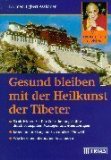 |
Egbert Asshauer, Ph.D. Gesund Bleinen mit der Heilkunst der Tibeter Trias Verlag, Stuttgart, Germany, 1989 Note this book is out of print Translates as "Stay Healthy with the Healing Power of the Tibetans". |
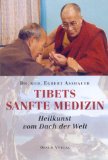 |
Egbert Asshauer, Ph.D. Tibets Sanfte Medizin Updated reprint, Oesch, Zurich 2003 Translates as "Tibet's Gentle Medicine" |
 |
Ian A. Baker The Tibetan Art of Healing Chronicle Books, San Francisco, 1997 This work features the luminous recreations of traditional medical thanka paintings by the contemporary Nepalese master painter Romi Shrestha. The accompanying text by Ian Baker, who has studied with Himalayan healers, yogis, and lamas, for fifteen years, unlocks the symbolism of these images. |
 |
Raoul Birnbaum The Healing Buddha, Revised edition Random House, New York, NY, 2003 This book presents important discourses on the Healing Buddha in his various manifestations and discusses the many symbols, colors, and deities that are used as objects of meditation. The accompanying photographs of sculptures, paintings, and mandalas demonstrate the importance of art and aesthetic experience in Buddhist healing practices. |
| Theodore Burang The Tibetan Art of Healing London, Robinson and Watkins Books Ltd. , 1974 Note this book is out of print Here, in a broad perspective having general as well as technical significance, the author - who speaks Tibetan and studied with practitioners - includes chapters on cancer, mental illness, and east-West research. |
 |
Barry Clark Quintessence Tantras of Tibetan Medicine contains the translation of the Root Tantra and Explanatory Tantra of Tibetan medicine. A thorough, detailed and systematic reference for Tibetan medicine in English, it contains the Tlbetan views and defining characteristics of healthy and diseased bodies. |
| Terry Clifford Tibetan Buddhist Medicine and Psychiatry. The Diamond Healing Weiser, York Beach, ME, 1984 This work was undertaken as part of a doctoral program in psychology and religious studies. It began simply as an inquiry into the Tibetan medical psychiatric tradition, but expanded to cover Buddhism as medicine and Tibetan medicine in general when it became clear that an understanding of Tibetan psychiatry necessarily includes all these aspects. |
| Bhagwan Dash Tibetan medicine, with special reference to Yoga Sataka LTWA, Dharamsala, India, 1985 Note this book is out of print The Traditional medicine of Tibet, still popular among local inhabitants and those of the border regions of neighboring countries, is a mix of science, art, philosophy and religion. Their interdependence contributes to its unique way of diagnosing diseases and treating them. The physician is considered to be an epitome of physical, mental and spiritual values. |
| Vaida Bhagawan Dash & Ven. Tulku Doboom Positive Health in Tibetan Medicine Sri Sargugu Publications, Dehli, 1991 This work deals with different aspects of positive health and it will be useful to students and research workers in the field of Medicine in general, and in the field of Tibetan Medicine and Ayurveda in particular. |
 |
Yeshi Donden Health Through Balance Snow Lion Publications, Ithaca, NY, 1986 In this classic text, Yeshi Donden explains the theory of Tibetan Medicine in a collection of outstanding lectures presented at the University of Virginia in 1980. Donden considers factors of personality, season, age, climatic condition, diet, behavior, and physical surroundings holistically in addressing the means for restoring health. |
 |
Y.D. Dhonden Healing from the Source: The Science and Lore of Tibetan Medicine Snow Lion Publications, Ithaca NY, 2000 Dr. Dhonden presents the theory of Tibetan Medicine, using over 50 years of his teachings. |
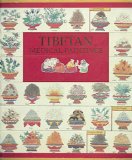 |
Gyurme Dorge, Yuri Parfionovitch, Fernand Meyer, (Eds.) Tibetan Medical Paintings: Illustrations to the Blue Beryl Treatise of Sangye Gyamtso (1653-1705 : Plates and Text PHarry N Abrams, New York, 1997 The 76 medical paintings represent the complex and diverse richness of the traditional Tibetan medical system, explaining in great detail every stroke of the brush and every medicinal plant used in Tibetan medicine. |
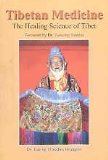 |
T.T. Drungtso Tibetan Medicine. The Healing science of Tibet Drungtso publications, Dharamsala, India, 2004 This journey into the healing methods of the roof of the world captures the essence of its medical system, previously unavailable to English readers. The book expounds the inextricable relationship between Tibetan medicine, Buddhist philosophy and astrology in a simple, yet interesting, way. |
| T. Dummer Tibetan Medicine and Other Holistic Healthcare systems Routledge, London, 1988 The author explains the tantric cosmology and symbolism relevant to Tibetan medicine including the chakras and psychic channels and energies; the causes of disease and types of illnesses and diagnosis; mind and mental disorders; diet and treatments. He then shows how Tibetan and Western holistic medicine can be practiced together. |
 |
T. Dunkenberger Tibetan Healing Handbook Pilgrims Publishing, Varanasi, India, 2000 This book expounds the essential correlations and approaches taken by the Tibetan science of healing. It is an introduction to one of the oldest healing systems, Tibetan natural medicine, and is comprehensive and easy to understand and describes the full spectrum of application possibilities for those who want to study Tibetan medicine and use it for treatment purposes. |
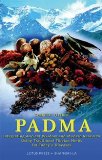 |
G. Feyerer Padma: Integrating ancient wisdom and modern research Lotus Press, Germany, ISBN: 091495573X, 2004 Padma Basic is a herbal formula developed from Tibetan Medicine and has been produced in tablet form for over forty years in a small town outide Zurich, not far from the snow capped peaks of the Swiss Alps. |
| L.D. Khangkar Lectures on Tibetan Medicine Library of Tibetan Works and Archives, Dharamsala, India, 1986 The late Dr. Dolma lectures on many of the fundamental concepts of Tibetan medicine and answers the numerous questions that students of Tibetan medicine have. Mainly compiled from her lectures on the subject during a tour of Australia and Holland, this compilation provides the readers with one of the best introductions to Tibetan medicine, its history and various cures and concepts propounded in its general and secret medical tantras. |
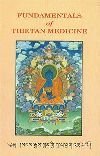 |
Men-tsee-khang Fundamentals of Tibetan Medicine Dharamsala, Men-tsee-khang (Tibetan Medical and Astrological Institute of HH the Dalai Lama), 2001 This book written from the Men Tsee Khang gives a clear and extensive explanation of the theory of Tibetan Medicine and provides a good introduction to Tibetan Medicine. |
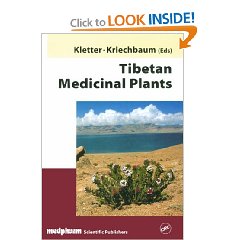 |
Christa Kletter, Monika Kriechbauml(Eds) Tibetan Medicinal Plants Medpharm GmbH Scientific Publishers 2001 This book provides results of studies on plants used in Tibetan medicine carried out in 2 Austrian development projects. Data on botany, chemistry, and pharmacology represent the Western perspective. Tibetan plant identification and classification reveal the traditional perspective. |
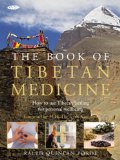 |
R. Quinlan Forde Book of Tibetan Medicine, how to use Tibetan Healing for personal wellbeing Gaia Books Ltd., 2008 Forde provides a thorough overview of the origins and practices of Tibetan medicine and explains how it can contribute substantially to maintaining a healthy mind and body. With an in depth look at contemporary ailments, such as stress and allergies, this highly accessible book brings the ancient discipline of Tibetan traditional medicine into the here and now, and shows how you can use it to improve your wellbeing. |
 |
L. Rapgay The Tibetan Book of Healing Lotus Publishers, Northhamptom, MA, 2000 This is a good overview of Tibetan medicine, an ancient, systematic and integral system of mind-body medicine containing a wealth of knowledge and experience along with many practical methods of health improvement. |
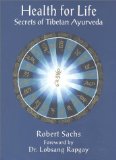 |
L. Rapgay and R. Sachs Health for Life: Healing Series Heartsfire Books, 1998 An excellent resource on Tibetan medicine that can be understood and used by both physician and layperson. |
| T.J. Tsarong Tibetan Medicinal Plants Tibetan Medical Publications, Kalimpong, India, 1994 A small but very well illustrated book with over 60 colour plates and descriptions of the principal plants used in Tibetan medicine. |
![]()
CLICK HERE for a further specialist booklist on TibetMed.org
Links to Pubmed studies
Live PubMed Search on www.tibmedinfo.ch/ under publications
Scientific articles written about Tibetan Medicine
Search Pubmed with search term: "Tibetan medicine"
www.ncbi.nlm.nih.gov/sites/entrez
Melzer J, Brignoli R, Diehm C, Reichling J, Do DD, Saller R. Treating intermittent claudication with Tibetan medicine Padma 28: does it work? Atherosclerosis 2006; 189(1): 39-46.
This is a very important publication since it is the only meta-analysis in Tibetan Medicine.
Semenova LY, Salmasi ZhM, Kazimirskii AN, Poryadin GV. Taban-Arshan: immunocorrector in atopic bronchial asthma. Bull Exp Biol Med. 2004 Jul;138(1):65-6.
Sallon S, Ben-Arye E, Davidson R, Shapiro H, Ginsberg G, Ligumsky M. A novel treatment for constipation-predominant irritable bowel syndrome using Padma Lax, a Tibetan herbal formula. Digestion. 2002;65(3):161-71.
Ryan M. Efficacy of the Tibetan treatment for arthritis. Soc Sci Med. 1997 Feb;44(4):535-9.
CLICK HERE for a worldwide listing of Research Institutes, Tibetan Doctors, and Related Resources on TibetMed.org
Maleta, A. (2005) Himalayan Doctors, Tibetan Medicine at the grassroots. Auch auf Deutsch erhältlich: Puls und Pflanzen, Tibetische Medizin in Ladakh. AMpublish, Austria
Reichle, F. (1996) Knowledge of healing. (German: Das Wissen vom Heilen. Subtitles: English, Deutsch, Français, Español, Polski, Lietuvi'kai).
Saxer, M. (2006) Journeys with Tibetan Medicine. English, German and Russian, subtitles: English, Deutsch, Français, Pусский. Anyma documentaries. Switzerland. (www.anyma.ch/journeys).
Cohen, L. (narrator) and directed by Hayashi, Y: The Tibetan Book of the Dead: The Great Liberation.
Dharma Haven, Tibetan Dharma and Medicine
http://www.dharma-haven.org
The emphasis of the web site is spiritual. It also contains a comprehensive, annotated collection of links on Tibetan Medicine. Click on Tibetan Medicine Resources.
H.H. the Dalai Lama on Tibetan Medicine
http://www.men-tsee-khang.org/
www.the-south-asian.com/Jan2001/HH_Dalai_Lama.htm
The Dalai Lama presents his views on the importance of Tibetan Medicine.
International Academy for Traditional Tibetan Medicine (IATTM)
http://www.iattm.net
IATTM presents research information on Tibetan Medicine and provides courses and training on Traditional Tibetan Medicine as it is currently practised.
Shang Shung Institute School of Tibetan Medicine (also International Institute for Tibetan Studies)
http://www.shangshung.org
The North American branch of Shang Shung in Massachusetts offers the only complete training in Tibetan Medicine outside of the Himalayan Region. The Institute also holds seminars, courses, conferences and exhibitions in its mission to preserve Tibetan culture.
Tibetan Healing Arts Practitioner Directory
www.tibetanhealingarts.com
Mainly, but not entirely, practitioners based in Massachusetts who attended the Shang Shung Institute. Most have training in several modalities.
The New Yuthok Institute, Milan Italy.
http://www.newyuthok.it
Courses and Seminars with Dr. Pasang Yonten. Website in Italian and English
Tibetan Medical and Astrology Institute (TMAI)
http://www.men-tsee-khang.org/
Official Website of the TMAI established by H.H. the Dalai Lama, Dharamsala, India.
General information and range of topics, including book shop.
Tibetan Medicine - Alive in the West!
www.blog.tibetanhealingarts.com
A blog hosted by the Shang Shung Institute School of Tibetan Medicine graduates.
Tibetan Medicine Resources and Courses
http://www.tibetanmedicine-edu.org
Dr. Pasang Yonten Arya Tendi Sherpa's site provides information and education related to the transmission of Tibetan culture and its healing knowledge and practices.
Tibetanmedicine
http://www.tibetanmedicine.com
General information on Tibetan Medicine
TibetMed
http://www.tibetmed.org
One of the first websites on Tibetan Medicine, developed by the Alternative Medicine Foundation, this site has a range of new information on Tibetan Medicine resources and practicing doctors.
TibMedinfo
http://www.tibmedinfo.ch/
This web site from the Padma AG presents impartial scientific information on Tibetan Medicine
Tibetan and Himalayan Digital Library
http://www.thdl.org
This international community of scholars uses Web-based technologies to integrate diverse knowledge about Tibet and the Himalayas.
Yuthog Foundation for Tibetan Medicine
http://www.yuthog.org
Concerned with the preservation and development of traditional Tibetan medicine, and the education and training of Tibetan Doctors in rural Tibet.
Author: R.G. Landgraaf, MD
Revisions by Amchi Lobsang Tsultrim, August 18, 2009
LATEST REVISION: December 1, 2009

All rights reserved.
